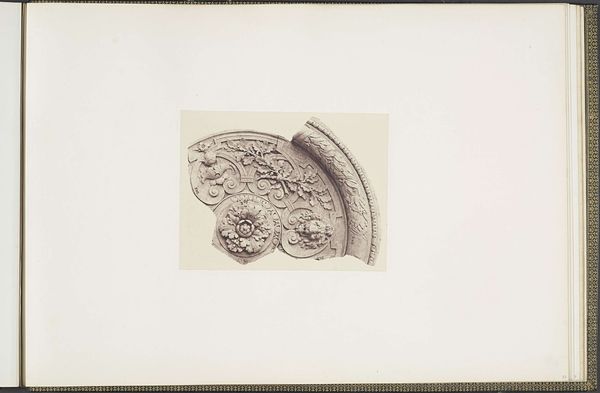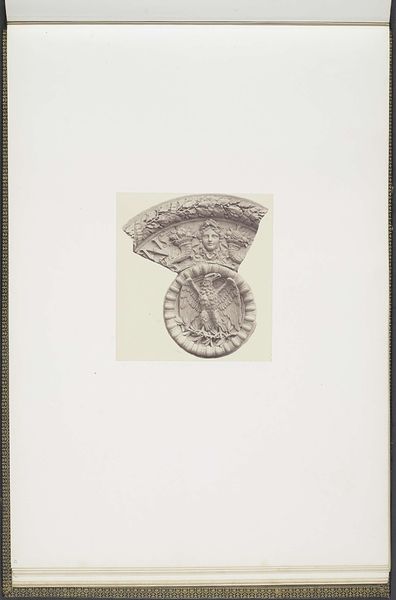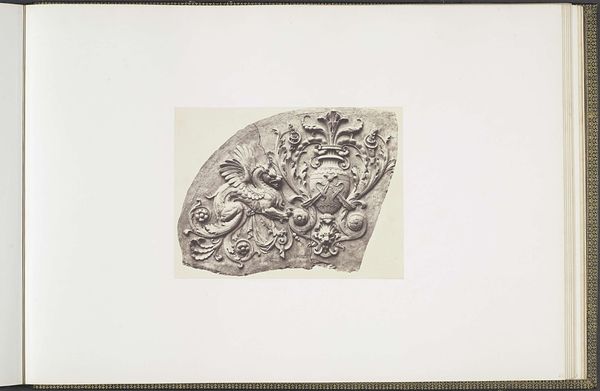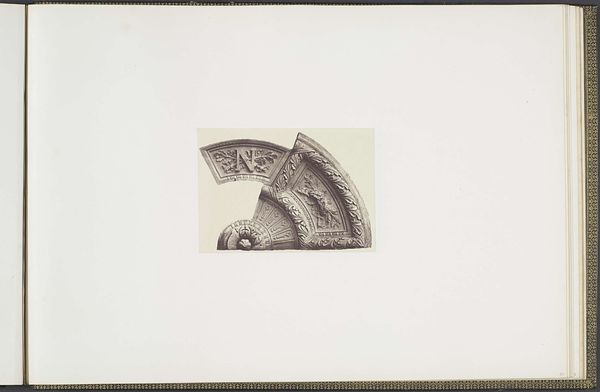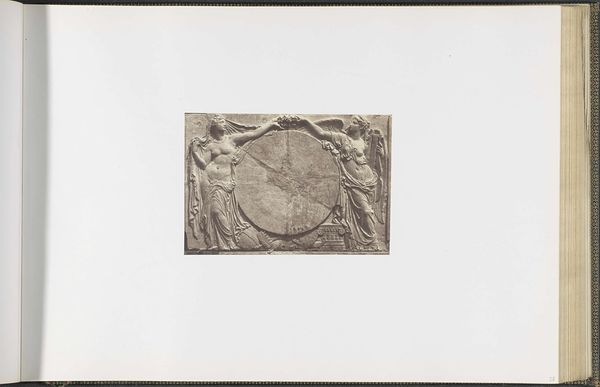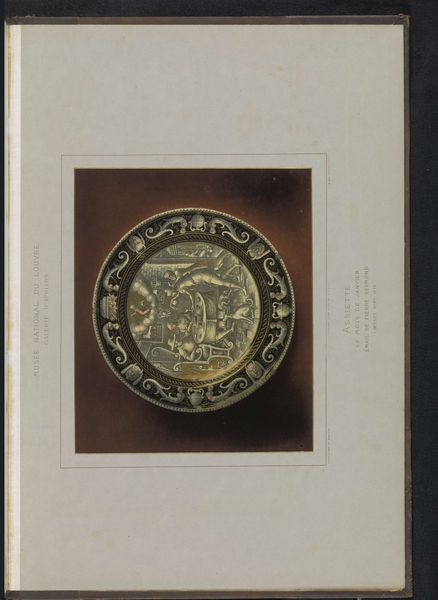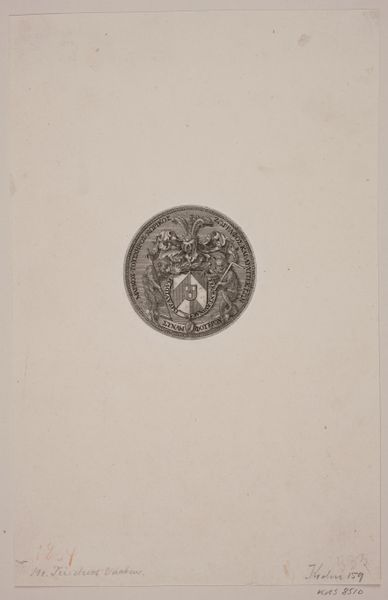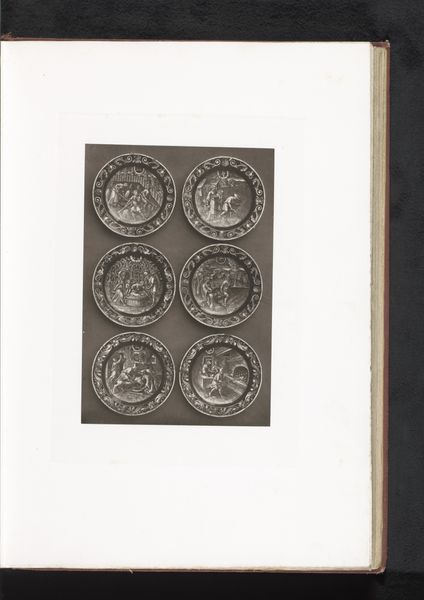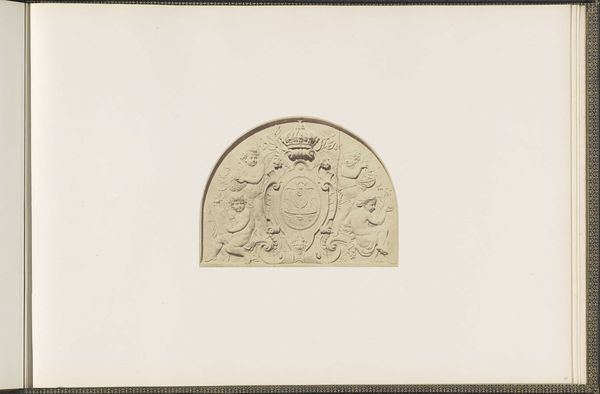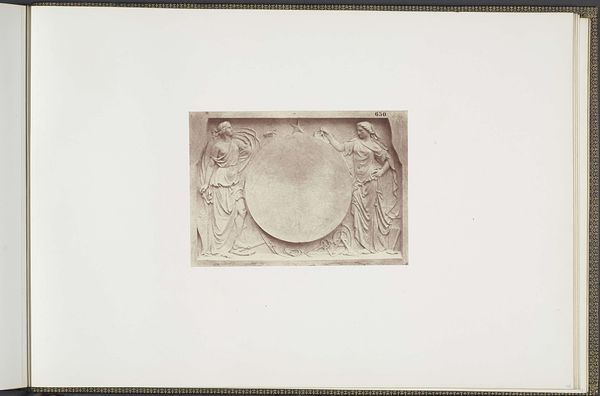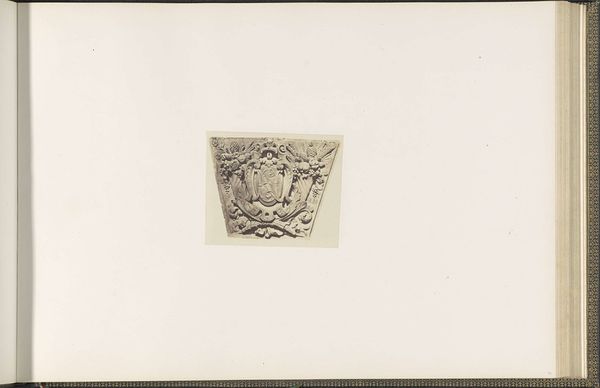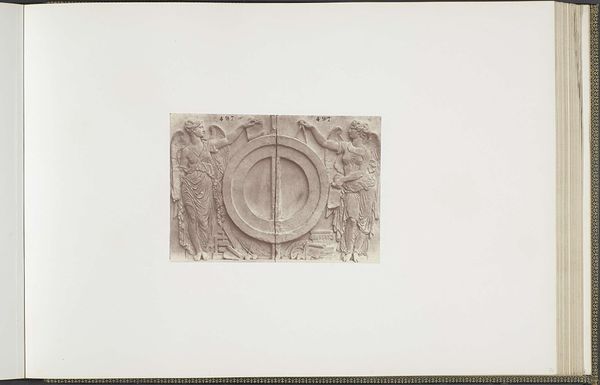
Gipsmodellen voor een gewelfversiering van het Palais du Louvre door Victor Corbel c. 1855 - 1857
0:00
0:00
drawing, paper, pencil
#
drawing
#
paper
#
geometric
#
pencil
#
history-painting
Dimensions: height 378 mm, width 556 mm
Copyright: Rijks Museum: Open Domain
Editor: So, this drawing is titled "Gipsmodellen voor een gewelfversiering van het Palais du Louvre door Victor Corbel," from around 1855-1857, by Edouard Baldus. It depicts plaster models for ceiling decorations at the Louvre. It feels like a study, something preliminary. What stands out to you when you look at this? Curator: The choice to document these plaster models, rather than the finished decorations, reveals a great deal about the social and institutional contexts of art in the mid-19th century. Baldus, as a photographer employed to document the Louvre's renovations, was not simply capturing the grandeur of the palace. He was also, perhaps inadvertently, showcasing the labor and the *process* of creating that grandeur. Does that give you a different feeling than just a study? Editor: That's a cool idea! It’s not just about the end result, but who's doing the work to get there. The models become a subject worthy of documentation themselves. Curator: Precisely. The "behind-the-scenes" becomes a commodity and helps disseminate information to a wider audience, thus cementing the Louvre’s, and France's, cultural dominance. The inclusion of details like the partial letter “N” even feels symbolic, connecting it to Napoleon III’s reign. Editor: Oh, that’s interesting, I hadn’t picked up on that. So it's all tied into projecting power and control through the image? Curator: Exactly! Consider the power dynamics at play. Who is Baldus? What’s his relationship to Corbel, the artist of the plaster models? And how does photography, as a relatively new medium, factor into how the Louvre presented itself to the world? The photograph acts as evidence of this cultural power, not just artistic merit. Editor: That completely changes how I see this drawing. It's not just preparatory; it's actively involved in constructing this whole narrative of power and French identity. I never thought about it like that. Curator: Seeing art through this lens allows us to question not only what we see, but *why* we see it the way we do.
Comments
No comments
Be the first to comment and join the conversation on the ultimate creative platform.
